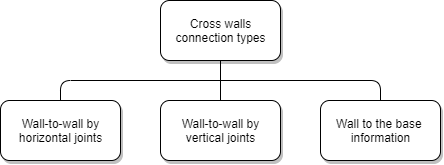Unit – 3
Masonry Bond
Q1) Explain types of bonds?
A1) Common types of bonds in brick masonry are as follows:
Other Types of bonds are:
Q2) Explain English bond and Flemish Bond?
A2) English Bond
Basic features of English Bond are as follows-:
Flemish Bond
Flemish bond consists of course of alternate headers and stretchers.
Every alternate course starts with a quoin header at the corner. To the next of quoin header, quoin closer is placed in alternate courses to develop face lap.
Q3) Differentiate between double and single Flemish Bond?
A3) 1. Double Flemish Bond
Double Flemish bond consist with alternate headers and stretchers in each course. The feature of the double Flemish bond is that the same appearance both in the front face as well as in the back face. hence gives a better appearance compared to the English bond.
Features of Double Flemish Bond:
2. Single Flemish Bond
Single Flemish bond comprises the double Flemish bond on its facing and English bond as backing.
Bond makes use of the strength of both English and Flemish bond.
This bond can be used for the construction of walls with a thickness not less than one and a half brick. For facing of double Flemish bonds good quality bricks is used. For backing and hearting, cheap bricks can be used.
Q4) Write difference between English and Flemish bond?
A4)
ENGLISH BOND | FLEMISH BOND |
pattern of English bond are alternate header and stretcher course | Pattern of Flemish bond with each course having alternate header and stretcher |
Requires No strict supervision and skill is demanded | Requires good workmanship and careful supervision. |
appearance is less pleasing | Appearance is more pleasing |
English bond is Expensive | Flemish bond is Economical |
More strength given for bricks with thickness greater than one & half brick | Less strong and compact compared to English bond |
Q5) Explain corner wall and cross wall?
A5)
Features of Cross Wall Construction
Cross Wall Construction Steps
Cross wall system involves the following construction steps:

Cross walls can be connected by any of the following key connections which are as follows:

Q6) Write benefits of cross wall construction?
A6)
Q7) What is one and half brick wall?
A7) A wall is said to be one brick thick if it as wide as the length of a brick.
There are 11 steps in this guide to building a brick wall which are as follows:
Step 1: Start your brick wall at the corners
Lay out the bricks at both ends of your wall where the pillars will start. Using your string line, make a straight guideline at brick height between the two outside bricks.
Step 2: Mix the mortar
Pour in water and mix the mixture of sand and cement. Repeat for a smooth, creamy texture that’s wet but not too loose.
Step 3: Lay the first course of bedding mortar
Lay 1-2cm mortar bed along the string line. lay the first brick and tap slightly to ‘bed in’. Repeat using string line as a guide.
Step 4: Create the brick pillars
At the point where you want your pillars to start, place a brick side-on to the end of the wall.
Step 5: Cutting bricks
When building pillars, at certain courses lay out the half-bricks. To make a cut, place the brick on its side.
Step 6: Keep the pillars one course ahead
Always build at least a course higher on the pillars than the rest of the wall.
Half Brick
A wall having a thickness equal to the thickness of a brick laid as a stretcher. Is called as half brick
brick is cut along its length, making it two equal halves then it is called queen closer.
Queen closer half is defined as queen closer brick portion whose width is half as wide as the original brick
Q8) Define closer in brick construction?
A8) The portion of the brick cut along the length in such a way as one long face remains intact is termed as closer.
Q9) Define king closer?
A9) When a brick is cut that the width of one end becomes half that of a full brick, while the width at the other end is equal to the full width, then it is called as king closer.
King closer is formed by cutting out a triangular portion of the brick between the centre of one end and the centre of the other end.
Thus, it has half header and half stretcher face.
Q10) Define half bat?
A10) When length of the bat is equal to half the length of the original brick.